A large organization approached me about running a Lego Serious Play session for 180 of their leaders. This session was intended to re-invigorate a 5-year transformation that had been in progress for a year and a half.
Why LSP?
The organization wanted to use LSP to unlock the creative juices of the 180 leaders, and they also wanted to co-create the go-forward transformation plan. Instead of having the CEO/CTO/Transformation Head bark orders out on stage, they wanted to present 3 key challenges they wanted their leaders to solve.
The other reason was they felt LSP would shake things up a bit as it would be unexpected given how conservative this organization is.
Our goal was clear: How can we get unstuck, and enlist the help of all 180 leaders to make this change happen? After much back and forth, we settled on an overall agenda. The CEO, CTO and Head of Transformation would deliver short talks about what has happened so far, where they were headed as an organization, and then they’d unveil 3 gnarly challenges they wanted their leaders to own, and solve.
We would then use a series of LSP exercises that were framed around the Miracle Question: “What if you woke up tomorrow and this challenge was solved?” We talked about the pros and cons of using a past-focus (IE: root cause, counter-measures etc), versus a future-focused (IE: Solution Focus Brief Therapy – Miracle Question). The group decided since this was a transformation, the past didn’t matter. We wanted to wipe the slate clean and move forward. Here was our general agenda:
- Opening: Have the leaders frame the challenges
- Explore what it means to be a leader in this new world
- Explore what each person’s life would look like when the challenges had been conquered (IE: what’s in it for me)
- Explore what the organization would look like when the challenges had been conquered (IE: what’s in it for the organization)
- Explore what needed to be true in order for the future state to be achieved
- Explore what is supporting, and holding us back from realizing that future
- Create an action plan for getting to the future state
- Create a small action for yourself that you’ll hold yourself accountable for
The Trouble with Scaling LSP
There is only 1 trick to scaling anything. EVERYTHING TAKES LONGER! Well, and the Lego becomes a tremendous expense!
Some of our troubles (and solutions) were:
- having enough Lego for 180 people (the organization bought about $25,000 USD of LSP Lego! In some cases, special, or multiple orders needed to be placed because the LSP folks won’t allow you to buy that much Lego at a time. We also had to improvise on one kit because they’re not sold anymore)
- having enough facilitators so each table had a dedicated facilitator (we enlisted all the Agile Coaches from the organization to help, in total had 17 facilitators, 2 main facilitators, 5 people behind the scenes co-ordinating before, during, and after the event.)
- randomizing people at tables to avoid birds of a feather syndrome (we wanted cross-functional participation, so HR people would be sitting with OPS people and more)
- removing certain Lego kits throughout the day (We used 3 kits throughout the day, a warm-up kit, fiddle bag (called Explorer Kits), and the big landscape kits. If you’ve done LSP before, sorting post-event is a chore so we wanted to reduce the administrative stuff afterwards!)
- getting the Lego from the organization’s main office to the location! (This was accomplished by having 2 people rent a van and drive 10 hours to the venue!)
- Since all the tables were generating data, we needed a way to synthesize it quickly and look for patterns across the whole group (we created a marketplace at the front of the room and brought everyone up to see the patterns. Given there were 3 challenges, we needed to co-ordinate each facilitator using the same colour sticky note for each challenge in order to make clustering the data easier.)
- Where would the change canvases live after they were created? (we captured pictures and are in process of creating a big-visible change wall)
- What if lesser-experienced facilitators were lost? (I roamed the crowd during exercises, and we used the buddy system. That is, we paired people together and put their tables close to each other so they could ask their neighbour for help)
- How would we know we were doing well? (We used http://sli.do 3 times during the event to check in.)
- After day 1, how could we take hoards of data, synthesize it, and provide something meaningful for people to work on for the half if day 2? (We ended up doing this, and threw out our plan as the Head of Transformation thought it would be better if the groups did this themselves)
- With 180 people and 17 groups, how would the executive sponsors keep up? (They roamed the floor during the actions part of day 2 and assigned themselves to help a change champions team!)
- How could we cross-debrief 180 people? (We randomly selected people to tell their story and had 3 mic runners, including me)
- How would we sort and store all the Lego? What about all the garbage? (we had 20 25L Ikea boxes that stored the warm-up kits, explorer kits, and landscape kits. We also mob-sorted the kits, and people randomly removed all the package throughout the hour or two that it took)
Ok, you get the idea…scaling LSP is logistically challenging but doable. I’ve done 30 – 60 people sessions many times and it’s not as hard as you might think. Typically at that scale, I have each table tell their stories to the whole group, generally we don’t need to have an actionable plan for an enterprise organization done by the end of the session. Also, we wanted the entire room to get aligned around this transformation so we needed to look for convergence and divergence amongst all the tables.
Highlights

Two screens showed timers, the middle screen showed instructions. We cross-debriefed tables as well.

The marketplace helped us find patterns throughout the room. Facilitators clustered learnings from the exercises here.
Now the work starts
We ended up with 17 change canvases at the end of the 2nd day and now the change facilitators are busy creating a big visible transformation wall, and following up on the actions that people signed up for at the end of the session.
We spent 4 days planning this event and during that time, the Head of Transformation was skeptical about ‘playing with Lego’, but once he experienced it, he loved it!

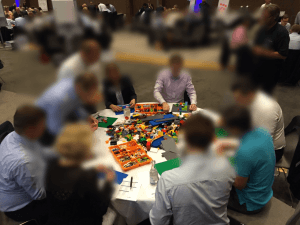
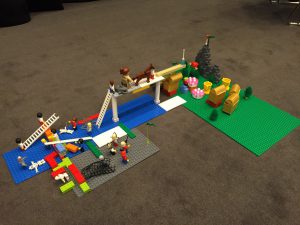
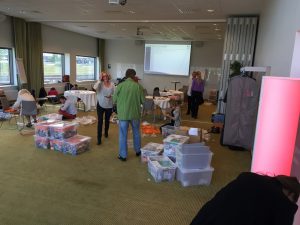
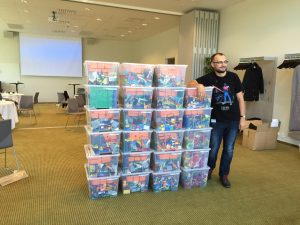
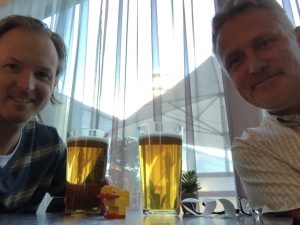
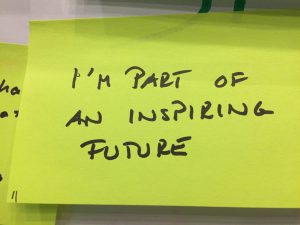
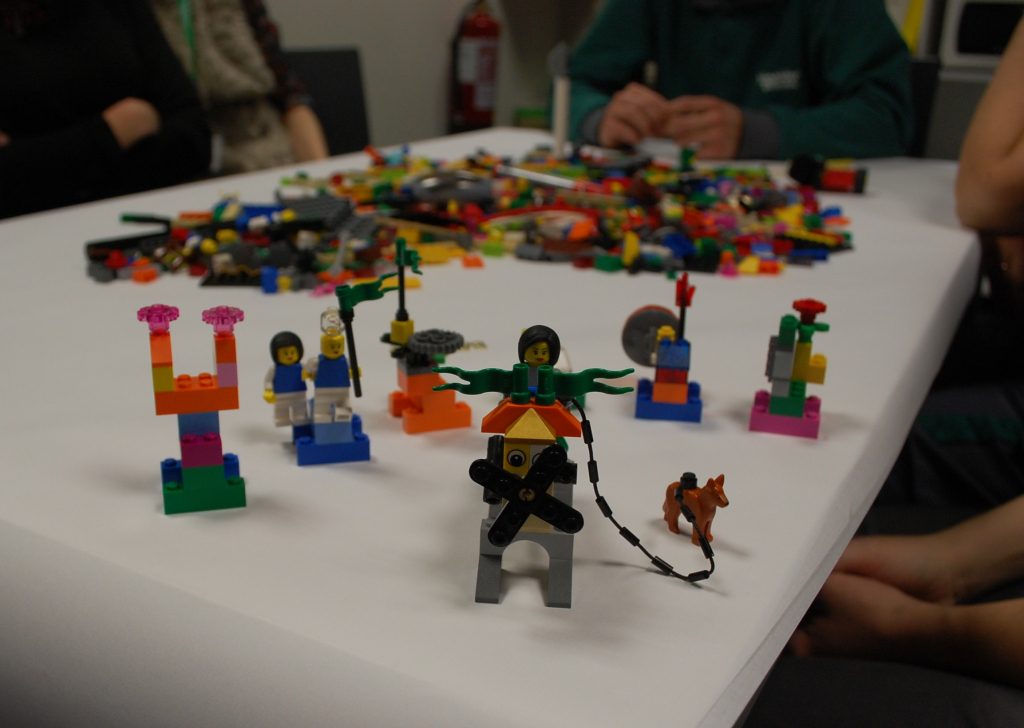


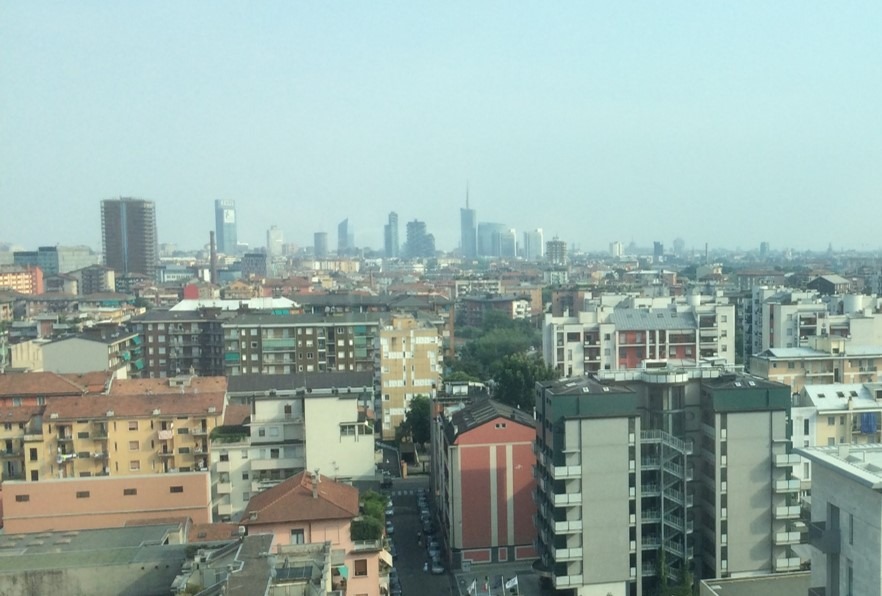
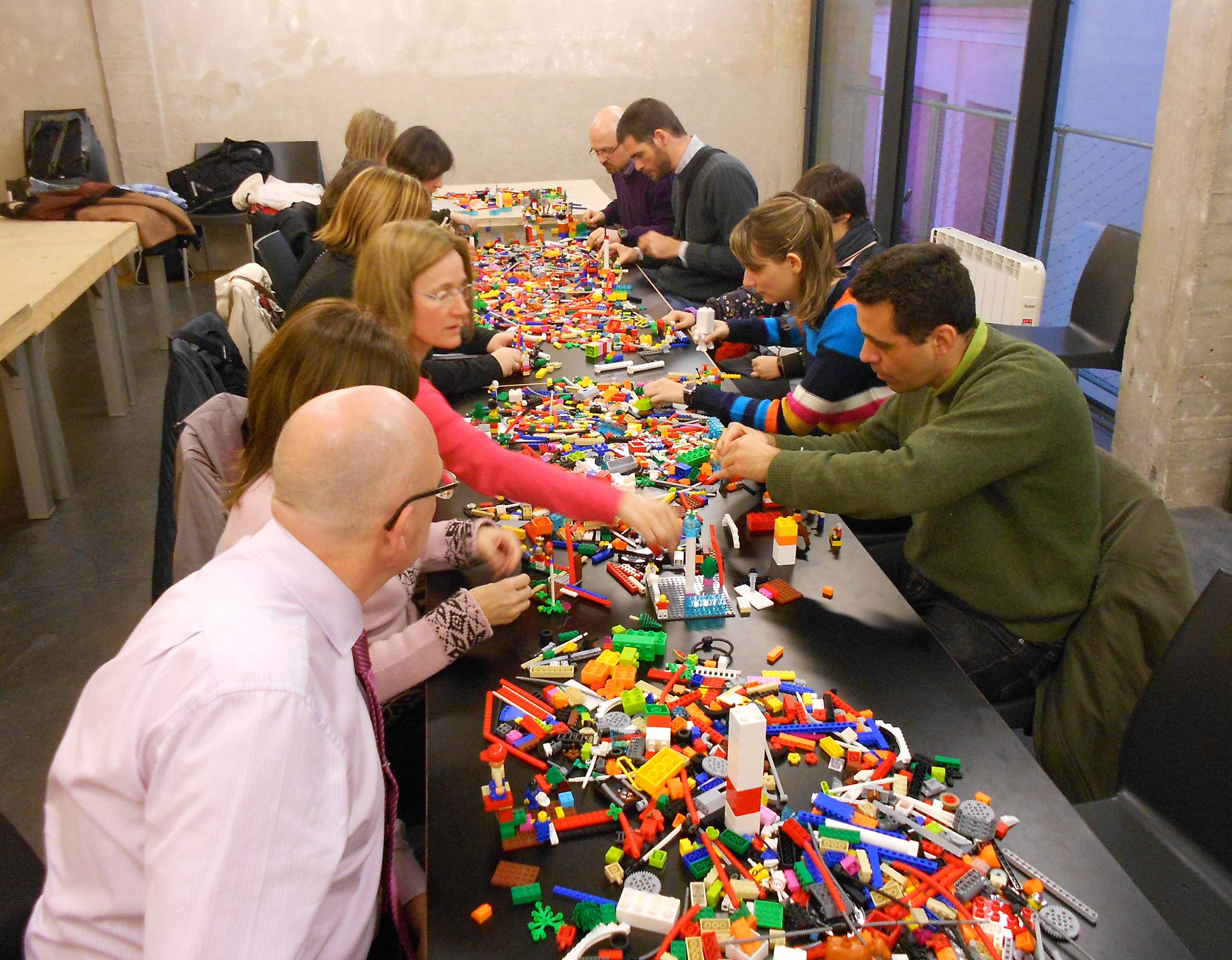
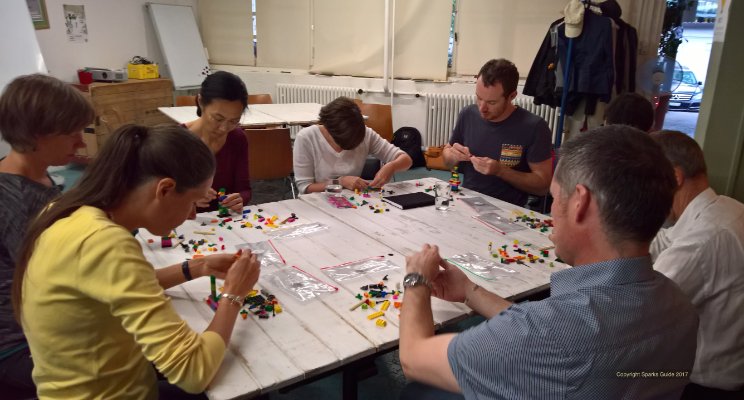

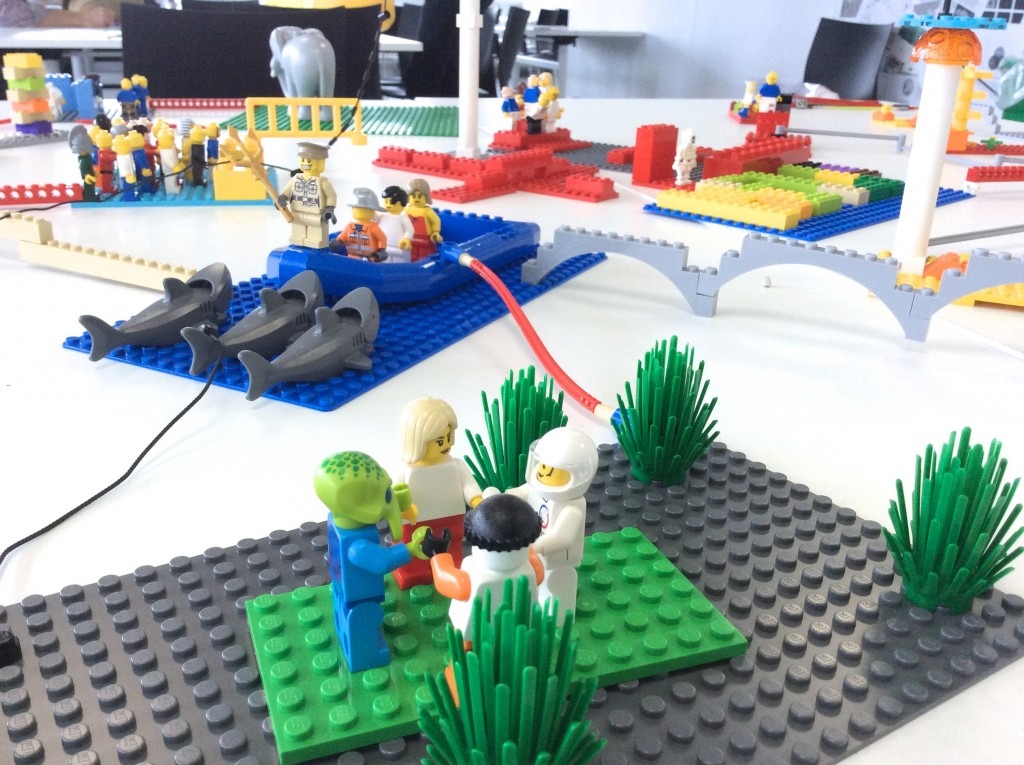

 Become a LEGO Serious Play facilitator - check one of the upcoming training events!
Become a LEGO Serious Play facilitator - check one of the upcoming training events!